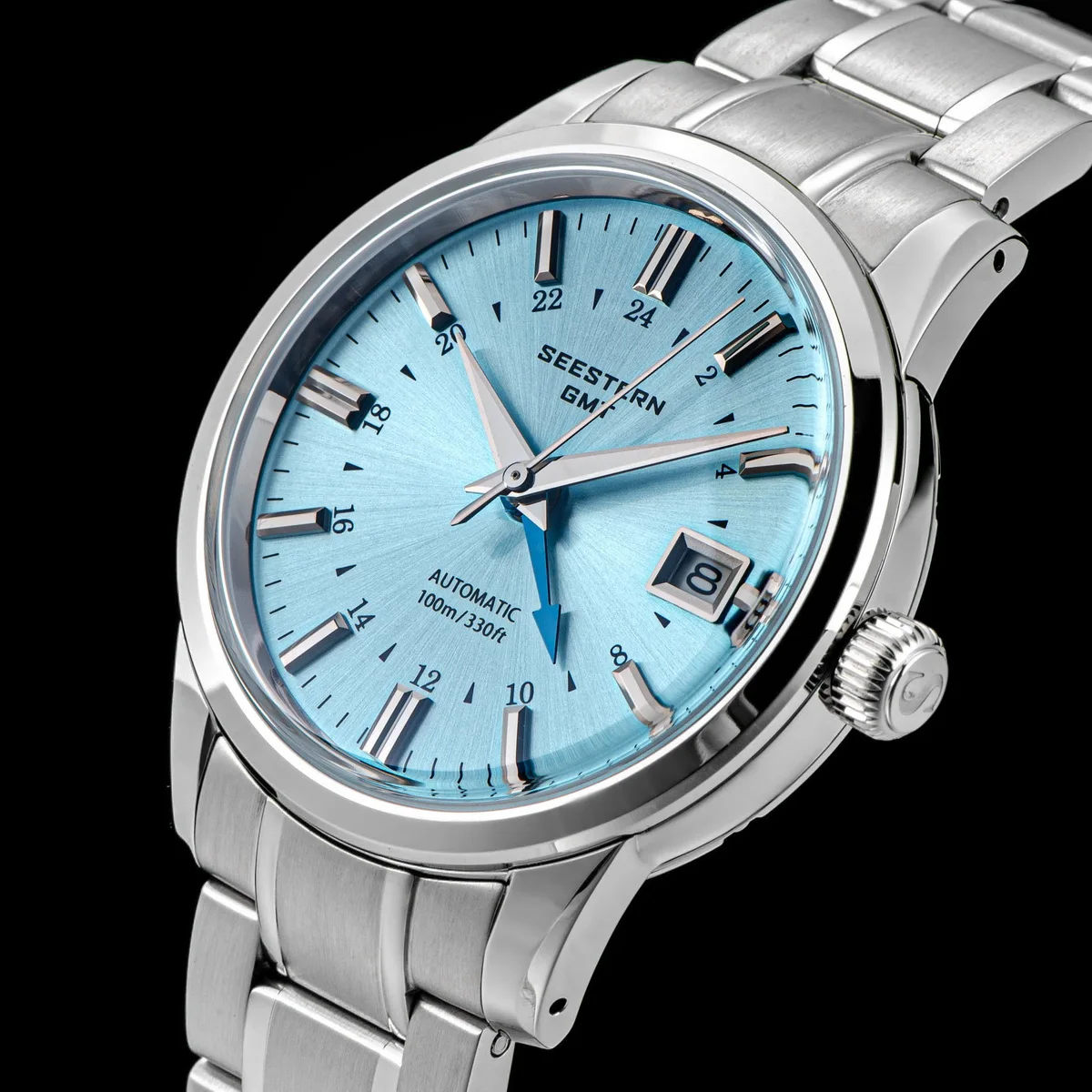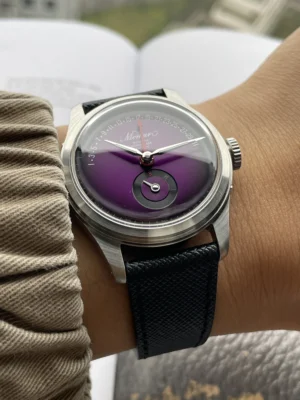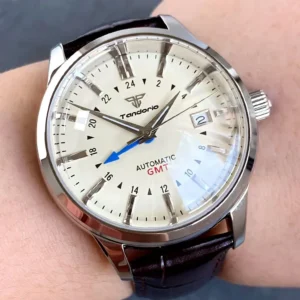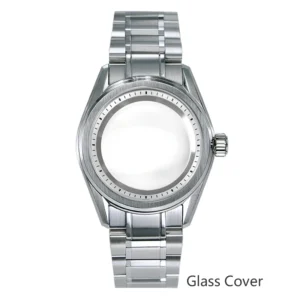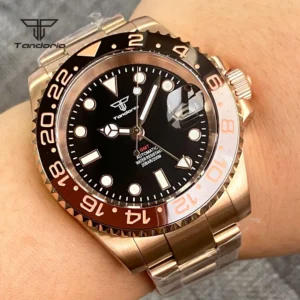1. Understanding Multi-Timezone Watches: An Essential Tool for the Modern Traveler
In our increasingly connected world, the ability to track time across different locations has become more than a luxury—it’s a necessity for many. Multi-timezone watches represent the perfect marriage of traditional horology and practical functionality, enabling wearers to monitor hours in different parts of the world simultaneously.
These specialized timepieces serve diverse needs:
– International business professionals coordinating with remote teams
– Frequent travelers crossing multiple time zones
– People with family or loved ones living abroad
– Aviation professionals tracking departure and arrival times
The concept of tracking multiple time zones isn’t new. The development of these watches traces back to early pocket watches modified for railroad companies and military operations, gradually evolving alongside global trade and travel. The history of dive watch engineering shares many parallels with the development of multi-timezone functionality, as both responded to practical professional needs.
Today, approximately 1.4 billion international trips occur annually worldwide, with millions of professionals regularly communicating across different time zones. This massive scale of global interaction explains why multi-timezone watches remain relevant even in our smartphone era—they offer immediate access to crucial time information with just a glance at your wrist.
As we’ll explore, choosing between dual and triple timezone functionality depends entirely on your specific needs and lifestyle. The evolution of dive watch technology demonstrates how watchmakers continually adapt to real-world requirements—a principle equally applicable to multi-timezone watches.
2. The Dual Timezone Watch: Mastering Two Places at Once
What Defines a Dual Timezone Watch?
A dual timezone watch, as the name suggests, displays the time in two different locations simultaneously. This functionality allows you to track your current location’s time while keeping tabs on another important timezone—perhaps your home city while traveling, or an international office where colleagues are working.
Common Dual Timezone Mechanisms
Watchmakers have developed several elegant solutions for displaying two time zones:
GMT/24-hour hand: An additional hour hand completes one full rotation every 24 hours, pointing to a fixed 24-hour scale on the dial or bezel. This allows quick differentiation between AM and PM hours.
12-hour subdial systems: A smaller dial within the main dial shows the second timezone using standard 12-hour format, sometimes with a day/night indicator.
Independent hour hand (“True GMT”): The main hour hand can be adjusted separately without stopping the watch, perfect for travelers changing time zones without disrupting timekeeping.
Digital displays or aperture windows: Some watches use digital displays or rotating discs visible through dial apertures to show a second timezone.
Reading and Setting Dual Timezone Watches
Most dual timezone watches operate through the crown and sometimes additional pushers. Typically, you’ll:
1. Set your primary local time first
2. Adjust the secondary timezone indicator (GMT hand or subdial)
3. Reference the appropriate scale for each time display
Advantages of Dual Timezone Watches
- Cleaner, more legible dial layouts
- Easier and more intuitive to read at a glance
- Generally more affordable than triple timezone options
- Less complicated to set and adjust
- More subtle, versatile design suitable for more occasions
Limitations of Dual Timezone Watches
- Restricted to monitoring only two locations
- May not satisfy needs of those managing business across multiple continents
- Some models lack AM/PM differentiation for the second timezone
Our GMT automatic watches collection showcases various approaches to dual timezone functionality, demonstrating how different manufacturers have addressed these design challenges.
3. The Triple Timezone Watch: Expanding Your Global Reach
What Defines a Triple Timezone Watch?
Triple timezone watches take functionality a step further, allowing simultaneous tracking of time in three different locations. This additional capability provides expanded global awareness for those who regularly interact across multiple continents or manage operations spanning several time zones.
Triple Timezone Mechanisms Explained
These watches employ several ingenious methods to display three distinct times:
GMT hand + rotating 24-hour bezel combination: A standard GMT watch becomes a triple timezone watch when you rotate its 24-hour bezel away from its default position. The fixed 24-hour scale shows one timezone, while the rotated bezel indicates another.
Dedicated third timezone indicators: Some watches feature additional subdials, windows, or digital displays specifically for the third timezone.
Multiple dial systems: More complex designs incorporate separate dial systems, each with independent hour and minute hands tracking different locations.
Setting and Reading Triple Timezone Watches
The process typically involves:
1. Setting your primary local time
2. Adjusting the GMT hand to display the second timezone
3. Rotating the bezel or adjusting a separate indicator for the third timezone
4. Learning to quickly distinguish between each time display
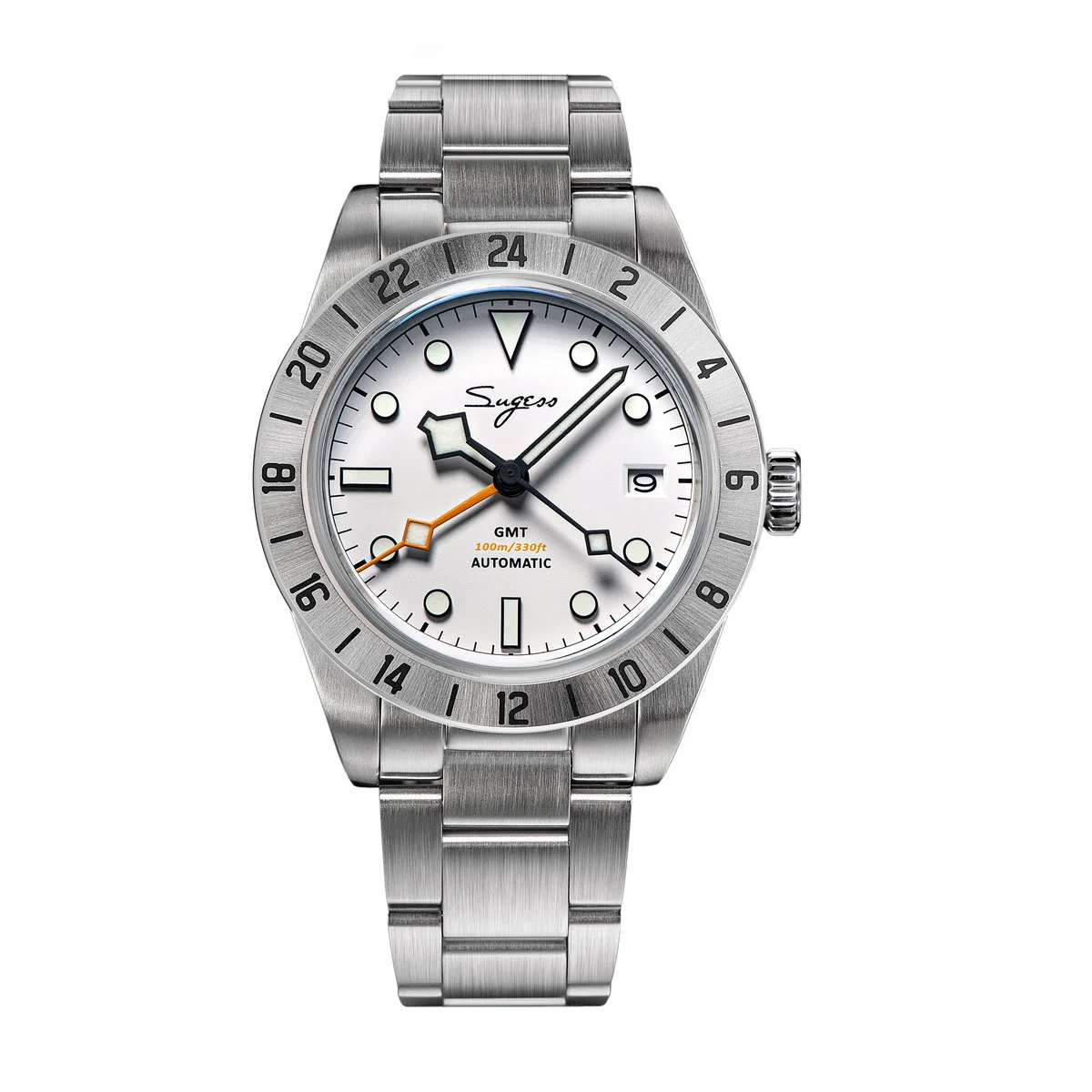
Advantages of Triple Timezone Watches
- Maximum global awareness for international operations
- Perfect for those who regularly track multiple business locations
- Often feature more sophisticated mechanical engineering
- Satisfy both practical needs and horological appreciation
- Make impressive statement pieces for watch enthusiasts
Challenges of Triple Timezone Watches
- Potentially busier dial designs with more information to process
- More complex operation requiring greater familiarity
- Generally higher price points reflecting added complexity
- Larger case sizes to accommodate additional complications
- Steeper learning curve for setting and reading
Understanding how GMT complications in dive watches work provides valuable insight into how these mechanisms manage to track multiple time zones in a single timepiece.
4. Key Differences: Dual vs. Triple Timezone Watch Comparison
When deciding between these two options, several key factors should influence your choice:
| Feature | Dual Timezone | Triple Timezone |
|---|---|---|
| Display Complexity | Cleaner dial with fewer elements | More indicators, potentially busier layout |
| Legibility | Typically easier to read at a glance | Requires more time to differentiate zones |
| Setting Procedure | Simpler, fewer steps | More complex, multiple adjustments |
| Size | Often more compact | Frequently larger to accommodate features |
| Price Range | Generally more accessible | Premium pricing reflecting complexity |
| Ideal For | Occasional travelers, those tracking one remote location | Frequent global travelers, international business managers |
| Aesthetic Impact | More versatile, suitable for formal and casual wear | Often more tool-oriented or statement design |
| Learning Curve | Minimal | Moderate |
The choice ultimately depends on your specific requirements. A professional regularly coordinating with teams in Asia, Europe, and America might find the triple timezone functionality essential, while someone who occasionally travels between two countries would likely find a dual timezone watch perfectly adequate.
For those who enjoy water activities while traveling, our GMT dive watches combine multi-timezone functionality with robust water resistance, offering versatility for both business and leisure.
5. Functionality Spotlight: Reading and Setting Multiple Timezones
Operating Dual Timezone Watches
Setting the Main Time:
1. Pull the crown to the time-setting position (typically position 2 or 3)
2. Rotate to set current local time
3. Push crown back to running position
Setting the Secondary Timezone:
1. Pull crown to GMT-setting position (often position 2)
2. Rotate crown to position GMT hand at desired second timezone
3. Reference the 24-hour scale for accurate reading
4. Return crown to running position
Reading Both Zones Quickly:
– Local time: Standard hour and minute hands
– Second timezone: GMT hand pointing to 24-hour scale or dedicated subdial
– Always note whether your GMT scale is fixed or on a rotating bezel
Operating Triple Timezone Watches
Setting Primary and Secondary Times:
1. Follow the same procedure as dual timezone setting
2. Ensure GMT hand is correctly positioned for second timezone
Configuring the Third Timezone:
1. For bezel-based systems: Rotate the 24-hour bezel to align with the third timezone
2. For dedicated third timezone indicators: Use appropriate pusher or crown position
3. Reference correct scale for each timezone indicator
Reading All Three Zones Efficiently:
– Create a mental map of which indicator corresponds to which location
– Practice quickly identifying each zone’s display
– Consider using the most important timezone as your main display
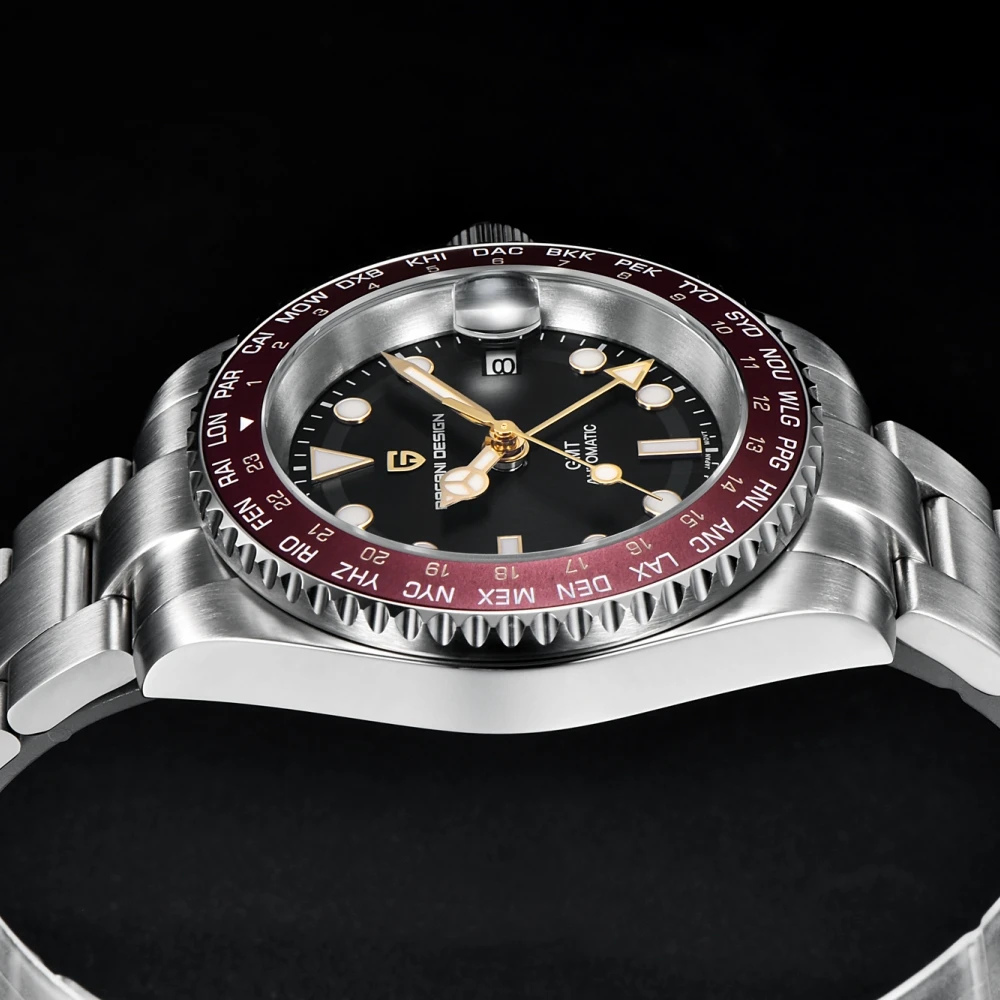
Common Setting Mistakes to Avoid
- Confusing AM/PM when setting 12-hour format displays
- Incorrectly calculating time differences between locations
- Forgetting to account for Daylight Saving Time changes
- Setting the date during the “danger zone” (typically 9PM-3AM) when date mechanisms are engaging
- Mistaking the function of different hands or indicators
With practice, operating even complex triple timezone watches becomes second nature, allowing you to quickly access global time information whenever needed.
6. Navigating Watch Terminology: GMT, Dual Time, and World Timers
The world of multi-timezone watches comes with specific terminology that’s important to understand when making your selection:
GMT vs. Dual Time
While often used interchangeably, these terms can indicate different functionalities. GMT (Greenwich Mean Time) watches typically feature a 24-hour hand pointing to a fixed or rotating 24-hour scale. Dual Time watches may use any system to display two timezones, including subdials or digital displays.
“Caller GMT” vs. “Traveler GMT” (True GMT)
– Caller GMT: The GMT hand is independently adjustable while the main hour hand remains fixed. Ideal for those who stay in one place but call internationally.
– Traveler GMT (True GMT): The main hour hand jumps in one-hour increments without affecting the minute hand or stopping the watch. The GMT hand typically shows home time. Perfect for travelers changing time zones frequently.
“Office GMT” Concept
A variation where the second timezone is displayed on a 12-hour subdial rather than using a 24-hour GMT hand. Often preferred for its more intuitive reading but may lack AM/PM differentiation.
Triple Timezone Watch vs. World Timer
While triple timezone watches display three specific locations, world timers show time across 24 global timezones simultaneously, typically through a rotating city disc and 24-hour ring. World timers offer comprehensive global coverage but with greater complexity.
Understanding multiple timezone watches helps clarify these distinctions and can guide your selection process based on your specific needs rather than marketing terminology.
7. Making Your Decision: Which Multi-Timezone Watch Suits Your Lifestyle?
Key Selection Factors
When choosing between dual and triple timezone watches, consider:
- Travel Frequency and Patterns: How often do you travel internationally?
- Location Tracking Needs: How many places do you regularly need to monitor?
- Dial Preference: Do you prefer cleaner aesthetics or information-rich displays?
- Adjustment Frequency: How often will you need to change timezone settings?
- Watch Size Preference: Are you comfortable with potentially larger case dimensions?
Scenario-Based Recommendations
For Occasional International Travelers
A standard dual timezone watch offers sufficient functionality without unnecessary complexity. The simpler operation makes it perfect for those who make a few international trips yearly.
For Bi-Continental Professionals
If you regularly work between two major regions (like North America and Europe), a dual timezone watch with clear AM/PM differentiation provides everything needed while maintaining legibility.
For Global Operations Managers
Those coordinating across three or more major regions benefit significantly from triple timezone functionality, justifying the additional complexity and potential learning curve.
For Watch Enthusiasts Valuing Complications
If horological craftsmanship and mechanical ingenuity are important to you, triple timezone watches often showcase more sophisticated engineering and offer greater appreciation value.
For Minimalists Preferring Clean Designs
A simple dual timezone watch with integrated design (where the GMT function doesn’t dominate visually) provides functionality without sacrificing aesthetic harmony.
Our GMT pilot watches collection offers specialized options for aviation enthusiasts and frequent travelers who value both form and function in their timepieces.
8. Frequently Asked Questions About Multi-Timezone Watches
Can all GMT watches display three time zones?
Not inherently. Standard GMT watches show two time zones, but those with rotating 24-hour bezels can track a third zone by rotating the bezel away from its home position. Fixed-bezel GMT watches are limited to two time zones.
What’s the difference between ‘true GMT’ and ‘caller GMT’?
A true GMT (or traveler GMT) allows independent adjustment of the main hour hand in one-hour increments without stopping the watch—ideal for travelers changing time zones. A caller GMT has an independently adjustable 24-hour hand while the main time remains fixed—better for those staying put but tracking foreign time.
Are triple timezone watches significantly more expensive?
Generally, yes. The additional complexity in both design and mechanics typically commands premium pricing, though exceptions exist at various price points.
How easy is it to read a triple timezone watch?
With familiarity, reading becomes intuitive, but there is a steeper learning curve compared to dual timezone watches. Dial layout and design significantly impact legibility.
Is a world timer better than a triple timezone watch?
Not necessarily better—just different. World timers show all 24 time zones simultaneously, which is comprehensive but potentially overwhelming. Triple timezone watches focus on just three specific locations with potentially greater clarity.
Which is better for frequent travelers?
Frequent travelers crossing multiple continents might appreciate triple timezone functionality or true GMT capability. Those traveling between just two regions typically find dual timezone watches perfectly adequate.
The features of multi-timezone pilot watches provide additional context for travelers looking to understand these specialized timepieces better.
9. Beyond Three: Understanding World Timer and Digital Multi-Timezone Options
For those requiring even more comprehensive timezone tracking, additional options exist beyond standard dual and triple timezone watches:
World Timer Watches
World timers represent the ultimate mechanical solution for global time awareness, displaying all 24 primary time zones simultaneously through an ingenious system featuring:
- A rotating 24-hour ring
- A fixed or rotating city disc representing each timezone
- Reference markers to align locations with their current time
World timers offer unmatched global coverage but with tradeoffs:
– More complex dial layouts requiring greater familiarity
– Typically larger case dimensions
– Premium pricing reflecting mechanical sophistication
– Sometimes reduced legibility due to information density
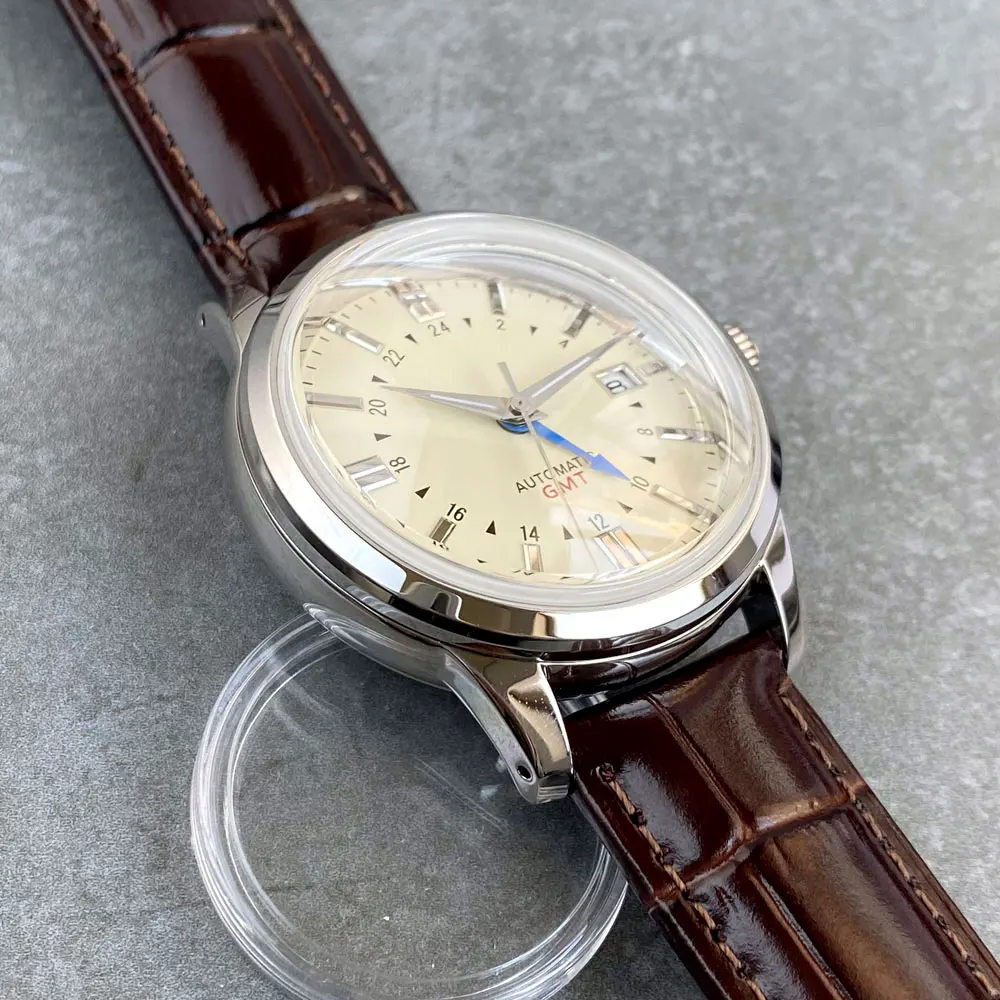
Digital Alternatives
Modern digital timepieces offer flexible multi-timezone capabilities:
– Instantly switchable between numerous preset timezones
– Automatic Daylight Saving Time adjustments
– Multiple timezone displays visible simultaneously
– Programmable city names rather than fixed options
– Often with additional traveler-friendly features like countdown timers
These alternatives complement traditional mechanical options, with each serving different aesthetic and functional preferences.
Classic Automatic Dress Watches, Day Date Automatic Watches, Perpetual Calendar Automatic Watches
Price range: $540.60 through $574.60 Select options This product has multiple variants. The options may be chosen on the product pageClassic Automatic Dress Watches, GMT Automatic Watches, GMT Pilot Watches
Price range: $1,240.86 through $1,463.33 Select options This product has multiple variants. The options may be chosen on the product pageClassic Automatic Dress Watches, GMT Automatic Watches, GMT Dive Watches
Price range: $468.93 through $552.94 Select options This product has multiple variants. The options may be chosen on the product pageGMT Automatic Watches, Unique Automatic Watches
$420.10 Select options This product has multiple variants. The options may be chosen on the product pageClassic Style Dive Watches, GMT Automatic Watches, Gold Tone Automatic Watches, Professional Spec Dive Watches
Price range: $440.67 through $489.70 Select options This product has multiple variants. The options may be chosen on the product pageGMT Automatic Watches, GMT Dive Watches, GMT Pilot Watches
$381.14 Select options This product has multiple variants. The options may be chosen on the product page
For those interested in mechanical complexity, our perpetual calendar automatic watches showcase how different complications can work harmoniously together in sophisticated timepieces.
10. Maintenance and Care: Keeping Your Multi-Timezone Watch in Perfect Order
Multi-timezone watches require specific care to ensure their additional complications continue functioning properly over time:
Special Maintenance Considerations
Bezel Care: For watches with rotating bezels, regular cleaning prevents dirt accumulation that might impede smooth rotation. Occasional application of silicon grease (for dive watches) or gentle cleaning can maintain proper function.
Crown and Pusher Maintenance: Multiple timezone watches often feature additional crowns or pushers that should be properly seated after use to maintain water resistance.
Service Intervals: Due to their more complex mechanisms, multi-timezone watches may benefit from slightly more frequent service intervals—typically every 3-5 years rather than 5-7 for simpler movements.
Date Change Considerations
Many GMT watches feature date complications that must be properly set:
– Avoid changing the date during the 9PM-3AM window when the date mechanism is engaged
– When crossing the International Date Line, remember to adjust the date accordingly
– Be aware of how timezone adjustments affect the date display
Movement Protection Practices
- Follow the correct sequence when setting multiple timezones to avoid putting stress on the movement
- Complete any adjustments gently without forcing components
- Consider the direction of rotation specified by the manufacturer when setting different hands
Understanding how long automatic watches last provides valuable context for maintaining any sophisticated timepiece, including multi-timezone watches, to ensure maximum longevity.
11. Final Thoughts: Choosing Between Dual and Triple Timezone Functionality
The choice between dual and triple timezone functionality ultimately comes down to balancing your specific needs with practical considerations of usability and design.
Dual timezone watches offer elegant simplicity for those who primarily travel between two regions or need to keep track of one location beyond their current timezone. Their cleaner dials, more intuitive operation, and generally more versatile aesthetics make them excellent daily companions for the occasional international traveler or remote team member.
Triple timezone watches shine for those genuinely requiring simultaneous awareness of three global locations. The additional complexity is justified by the expanded functionality, making them invaluable tools for international business executives, global operations managers, or aviation professionals regularly crossing multiple continents.
Rather than automatically choosing the most complex option available, honestly assess your regular requirements. Many watch enthusiasts discover that a well-designed dual timezone watch provides the perfect balance of functionality and elegance, while others who regularly juggle communications across three continents find the triple timezone capability essential.
The perfect travel companion isn’t necessarily the one with the most complications—it’s the one that seamlessly integrates with your lifestyle while providing exactly the information you need, when you need it.

